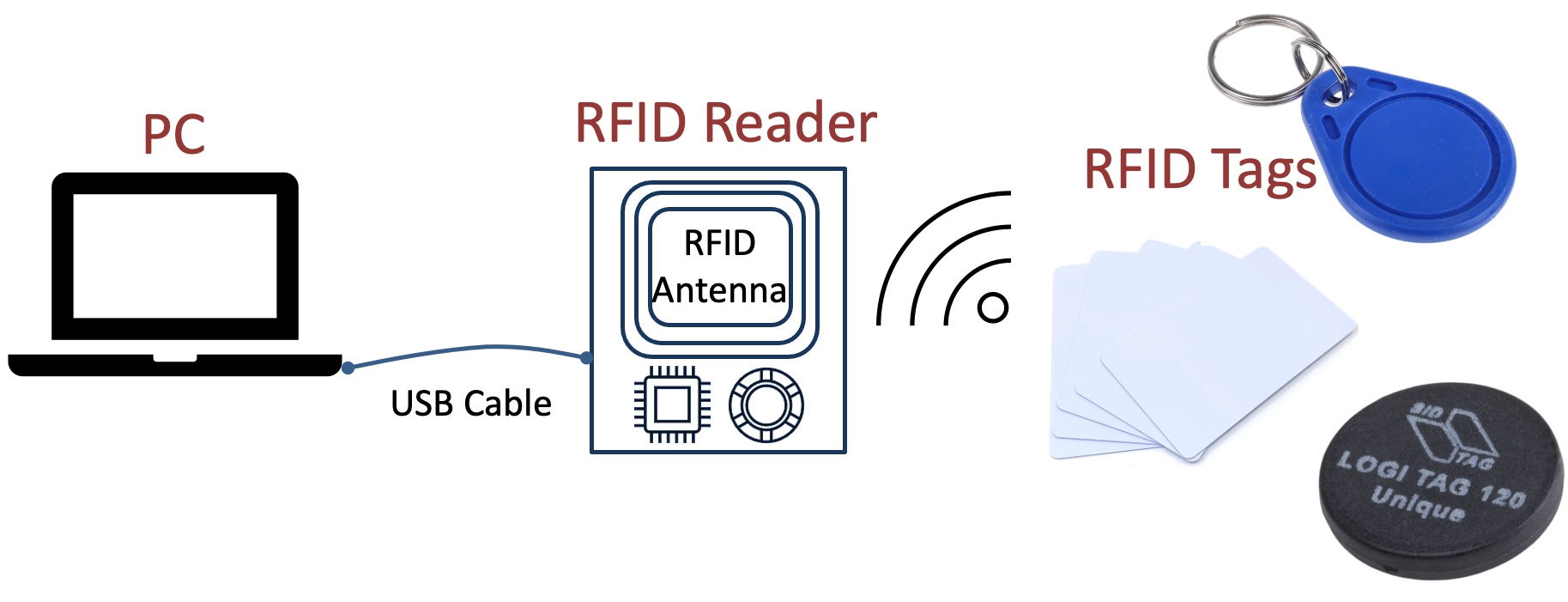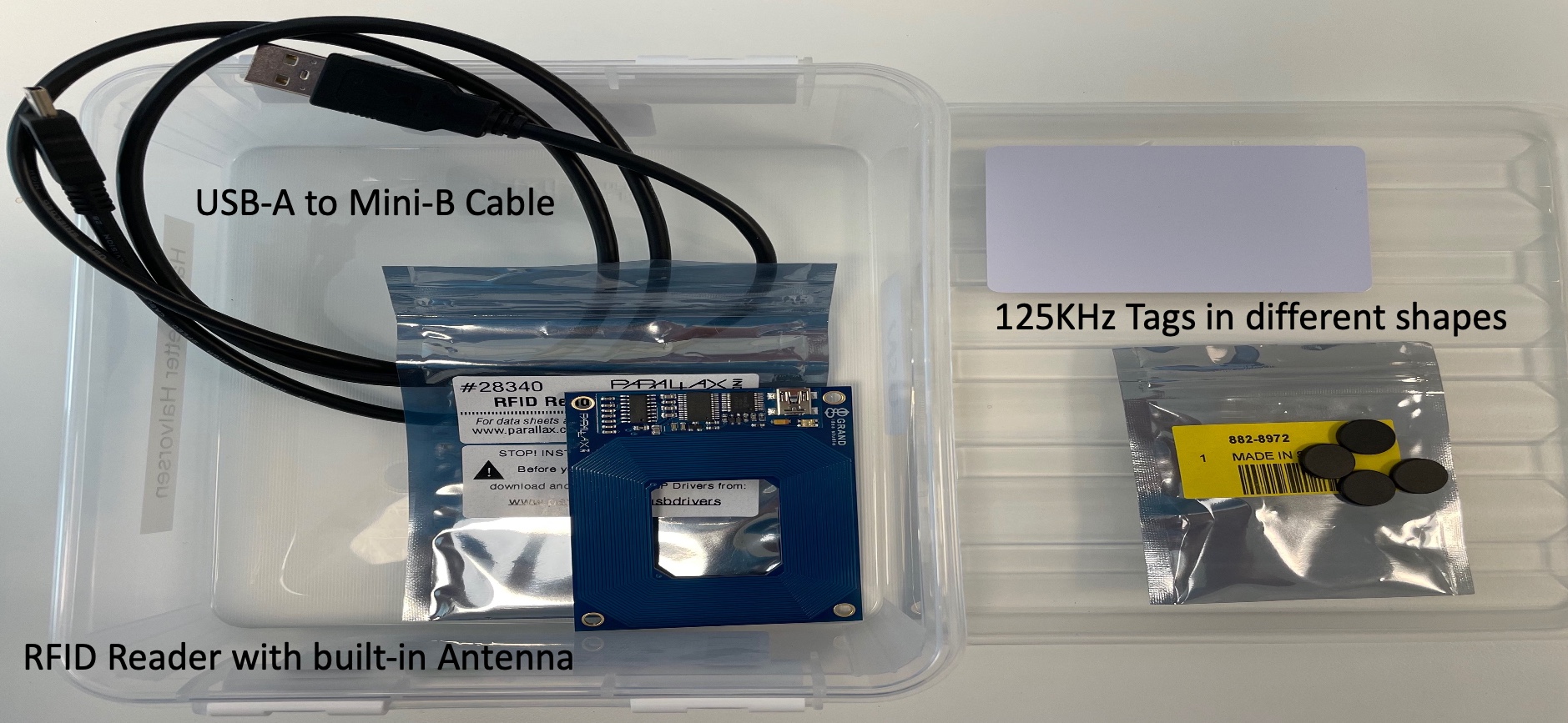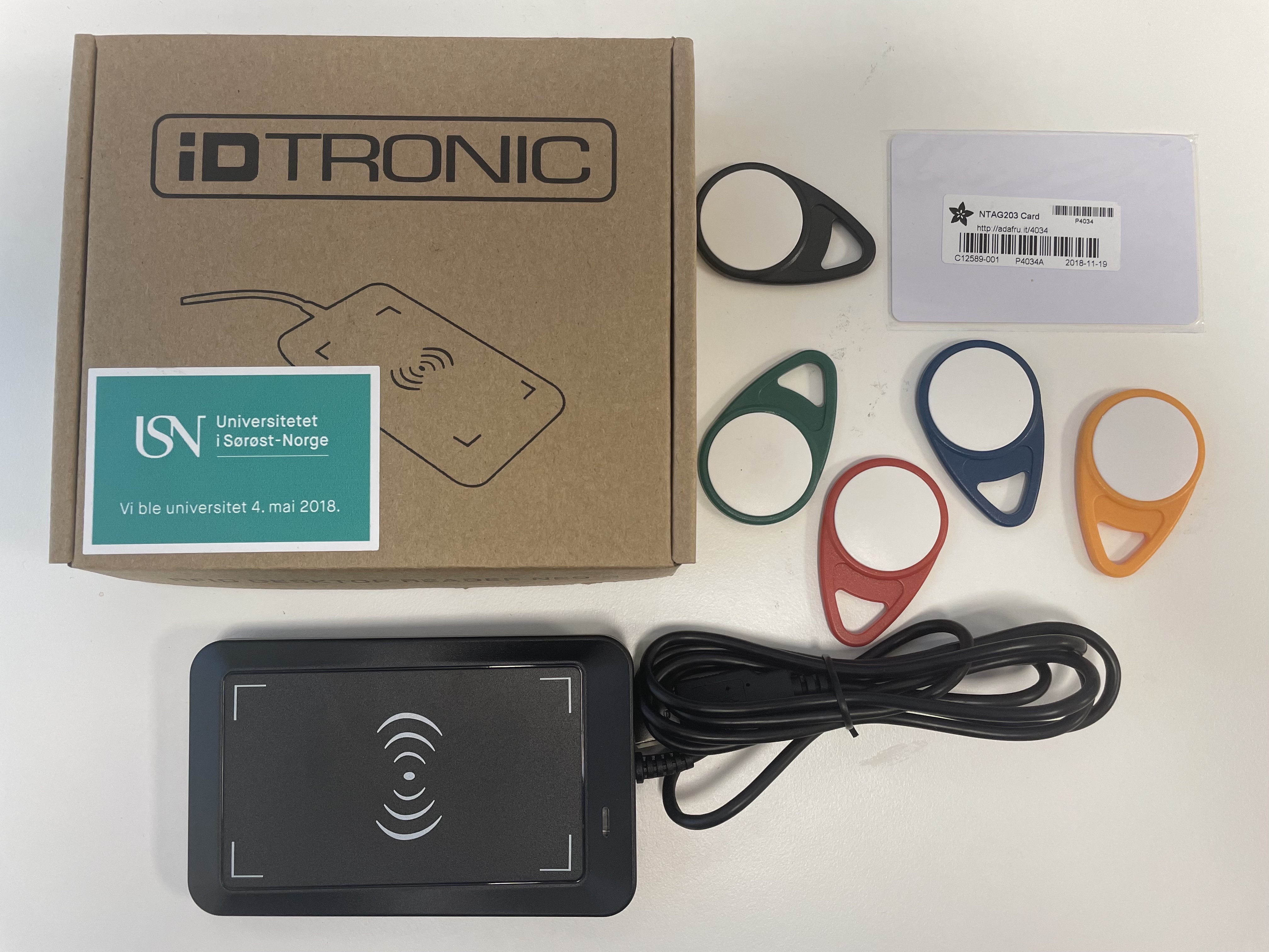RFID (Radio Frequency Identification System)
RFID uses radio waves produced by a reader to detect the presence of (then read the data stored on) an RFID tag. Tags are embedded in small items like cards, etc. Typical applications are access control, item tracking, etc.

Resources:
RFID Basics (Website, Sparkfun)
RFID (YouTube) + PowerPoint (PDF) - General overview of RFID with some examples
Bachelor Project (PDF) + Final Report (PDF) - "Implementering av automatisk utlånssystem for verktøylager". Use it for inspiration when development of your own project.
Below, different RFID systems are presented, such as:
- Parallax 28340 RFID USB Reader System (125KHz)
- Desktop Reader NEO 2 HF RFID Reader (13.46Hz)
- Eccel OEM-MICODE-USB RFID Reader System (13.56MHz)
Parallax 28340 RFID USB Reader System (125KHz)
Below you see the Parallax 28340 RFID USB Reader System. The system consists of a USB RFID reader with a built-in antenna, A USB-A to Mini-B cable and different RFID Tags.

Parallax 28340 RFID USB Reader System (125KHz) (YouTube) + PowerPoint (PDF)
Additional Resources:
Parallax 28340 RFID USB Reader (Website, Parallax) - Make sure to read the Datasheet, etc.
Parallax FTDI USB Drivers for Windows (Website, Parallax) - Make sure to install the driver BEFORE you plug in your Hardware!
Desktop Reader NEO 2 HF RFID Reader (13.56MHz)
Below you see the Desktop Reader NEO 2 HF RFID Reader System. The system consists of a USB RFID reader with a built-in antenna inside a case bith built-in, USB A cable. You also see different RFID Tags.

Note!! The RFID reader is normally ready to use from the factory in so-called HID Mode (which is recommended!!) So, you normally don’t need to do any configurations!!
Getting Started: The only thing you need to do is connect the RFID reader to the PC using the USB cable. For testing, you can open MS Word. Then place an RFID tag on the reader, and the tagid will automatically be scanned and be displayed in MS Word. The same is done in Visual Studio and C#. Create a new application, insert a Textbox, start the application. The tagid will then be automatically put into the Textbox. You are now ready to start creating your application.
Desktop Reader NEO 2 HF RFID Reader (13.56MHz) (YouTube) + PowerPoint (PDF)
RFID Reader with Windows Forms Examples (YouTube) + PowerPoint (PDF)
Typically, you need to create a Desktop Application (and not a Web Application) in order to communicate with such a device. But since this device (Desktop Reader NEO 2) does not need any C# code (which is executed server-side in a web application) to work, you can also use it in ASP.NET Core, since it only needs an active TextBox to work.
ASP.NET Core RFID Web Application (YouTube) + PowerPoint (PDF)
Additional Resources:
Desktop Reader NEO 2 HF 13.56Hz (Website, iDTRONIC) - Make sure to read the Datasheet, etc.
Eccel OEM-MICODE-USB RFID Reader System (13.56MHz)
Below you see the Eccel OEM-MICODE-USB RFID Reader System. The system consists of a USB RFID reader with a built-in antenna, a case, USB A-B cable and different RFID Tags.

Eccel OEM-MICODE-USB RFID Reader (13.56MHz) (YouTube) + PowerPoint (PDF)
Additional Resources:
Eccel OEM-MICODE-USB RFID Reader (Website, Eccel) - Make sure to read the Datasheet, etc.
MicroRWD MICODE Module (Website, Eccel) - Here you find Datasheet, Configuration Tool, etc.
The "MicroRWD MICODE" module is the main components used in the "Eccel OEM-MICODE-USB RFID Reader" system.